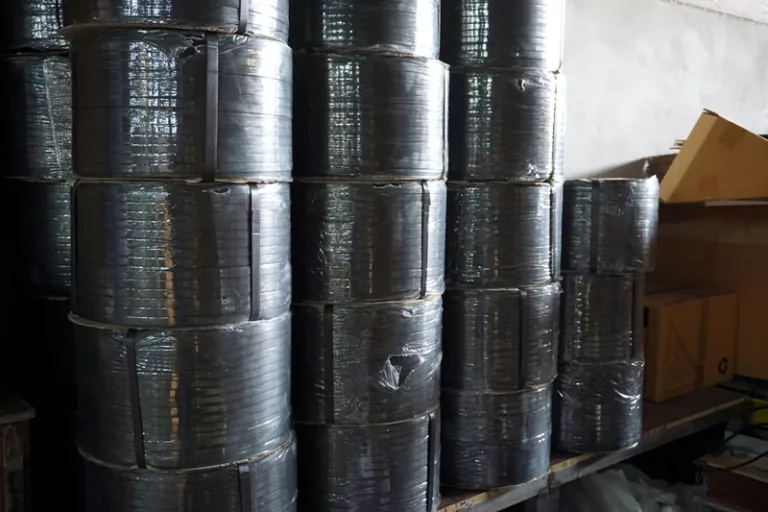
Understanding Banding Basics
Strapping has been around for a long time in the packaging world and there are many different types. The most common strapping’s are made from either plastic or steel. There are advantages and disadvantages to both, making it important to understand how each material performs in specific scenarios.
In this article, we will cover definitions, characteristics, applications, and common terminology used surrounding the most used types of strapping.
Strapping – The most commonly used means of bundling in the packaging.
- Bundling together for handling and shipping: newspapers, pipe, lumber, concrete block, etc.
- Attaching items to pallets, skids, and crates
- Reinforcing wooden boxes, crates, and corrugated boxes
- Attaching items to flatcars, flatbed tractor trailers, etc.
- Securing coils of steel or paper
- Holding bales of agricultural products or textiles
Common Banding Terminology:
To better understand strapping, its advantages and disadvantages, as well as its characteristics, it is important to understand some of the main terms used in the industry.
- Tension: any form of pushing or pulling to tighten a strap
- Elongation: the amount of stretch in the strap as tension is applied
- Elongation Recovery: the strap’s ability to return to its original state after tension is removed
- Tension Decay: over time, tension will diminish; polyester exhibits the least amount of tension decay, while polypropylene shows the largest amount
The Basics of Polyester Strapping
Plastic strapping, in general, is often referred to collectively as “poly strapping” despite its specific differences. Polyester (PET) strapping is a solid and tough form of strapping material. In many applications, polyester strapping is utilized to replace steel strapping depending on the items being packaged.
Since polyester strapping offers the highest strength and greatest retained tension of all plastic strapping, it is often used on heavy-duty loads that need high initial tension along with high retained tension during handling and storage. It is commonly used for packaging cinder blocks, timber, metal, pallets of unitized products (such as soda or beer), and other heavier items.
Strapping Performance & Durability
Polyester strapping is formulated to have the properties of steel while providing many performance advantages. Competitive pricing and performance characteristics have motivated many steel-strapping users to switch to polyester. This type of poly strapping is available in both machine grade and hand grade and is easy to dispose of and recycle.
- Similar Performance to Steel
- 30% Savings Compared to Steel
- Increased Load Security
- Resistant to Ultraviolet
- Degradation
- Water Resistant
- Rust Resistant
- Reduced Environmental Impact
- Lightweight
- Safer for Employees
- Waste
- Recyclable
The Basics of Steel Strapping
Steel strapping features high tensile strength and is made from multiple types of steel alloy. While steel strapping suffers from having less tensile strength than polyester, it boasts the highest break strength of all strapping materials.
Essentially, this translates to the fact that steel strapping has the best load containment for the heaviest loads (such as industrial equipment).
While it is still the preferred alternative in some industries, the market is declining, largely because it is dangerous to work with (presenting sharp edges) and difficult to recycle. But, common applications still include steel coils, bundles of metal, baling wire, bricks and pavers, and roll end-binding.
Which Type Of Strapping Material Is Right For Your Products?
Now that you know the differences between polyester strapping and steel strapping, answer the following questions to decipher which one is right for packaging your products.
- Is the load heavy-duty and stable? If so, use steel strapping.
- Does it need to travel a long distance? If so, use steel strapping.
- Will it need to be loaded and unloaded many times before reaching final destination? If so, use steel strapping.
- Is the load fragile? If so, use poly strapping.
- How experienced are your employees using steel strapping? If they are not very experienced, you should use poly strapping.
- Are you shipping your products via railroad? – If so, then you have to use steel strapping by law.
